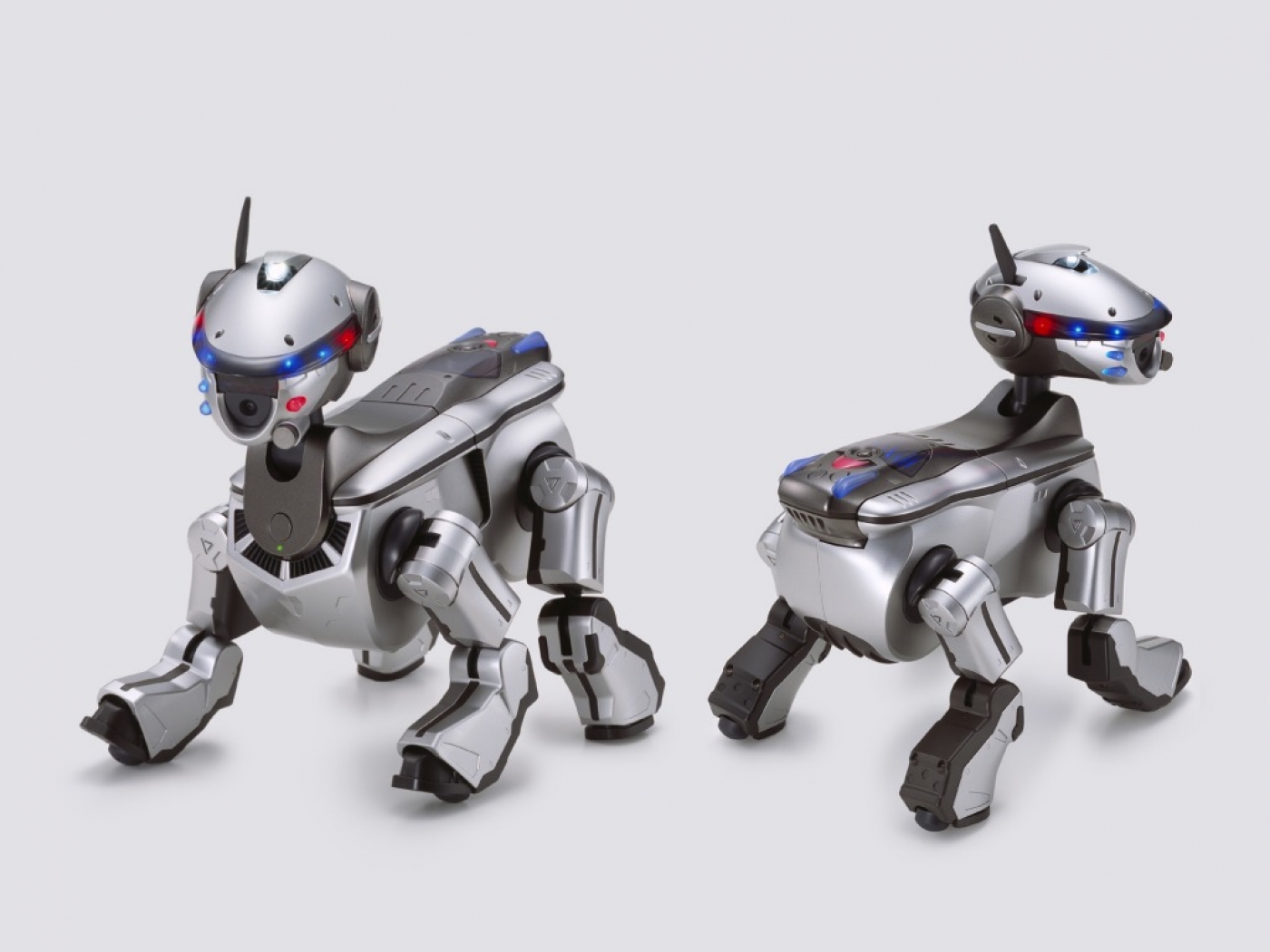The ERS-220 was released by Sony in November 2001. (content combined from the Aibo wiki and other sources)
Contents
- 1History
- 2Design
- 3Function
- 3.1Hardware
- 3.2Models
- 3.2.1Supercore
- 3.2.2Special Editions
- 3.3Software
- 3.4Troubleshooting
History
Released shortly after the ERS-311 and ERS-312 on 11/8/2001, the ERS-220 aimed to embrace robotic and mechanical design. The ERS-220A model began preorder on July 1st in the US and EU.
Design
The ERS-220 was designed by Japanese designer, artist, and producer Shoji Kawamori. Notably, he also created the anime series Macross and worked on mechanical design for Ghost in the Shell.
Unlike other AIBO models, the ERS-220 was not designed to appear at all organic but instead took a directly mecha-inspired approach.
Function
Hardware
The hardware of the ERS-220 is identical to the ERS-210 with the exclusion of four degrees of freedom (no moving "tail" module or articulated ears). A variety of LEDs were added that were not present on the ERS-210.
| Processor | 64-bit RISC processor |
|---|---|
| Memory | 32MB |
| Inputs | PC Card Type III Charging terminal |
| Camera | 100,000-pixel CMOS image sensor |
| Audio Input | Stereo microphone |
| Audio output | Speaker |
| Sensors | Thermometric sensor Infrared distance sensor Acceleration sensor Pressure sensor (on the head), with switches on the chin, back, and paws Vibration sensor |
| Degrees of freedom | Head: 3 degrees of freedom Retractable head light: 1 degree of freedom Leg: 16 degrees of freedom per leg (20 degrees of freedom in total) |
| Power consumption | Approx 9 W (in normal mode) |
Models
Supercore
Along with ERS-210's, the ERS-220 was released as a Supercore AIBO. However, the ERS-220 was not utilized in RoboCup competition. Worth noting is the ERS-220's dependence on OPEN-R 1.1.3, which shipped out-of-the box with Supercore modules but not the initial releases of 2x0 cores.
Special Editions
The ERS-220 was also released as the Transformation Kit, or ERS-220E1 (referred to as ERS-220/TK frequently by the community.) The kit included the ERS-220's modular components (head, tail, legs) without a core as to offer a way for ERS-210 owners to update, if desired, to the newer AIBO.



